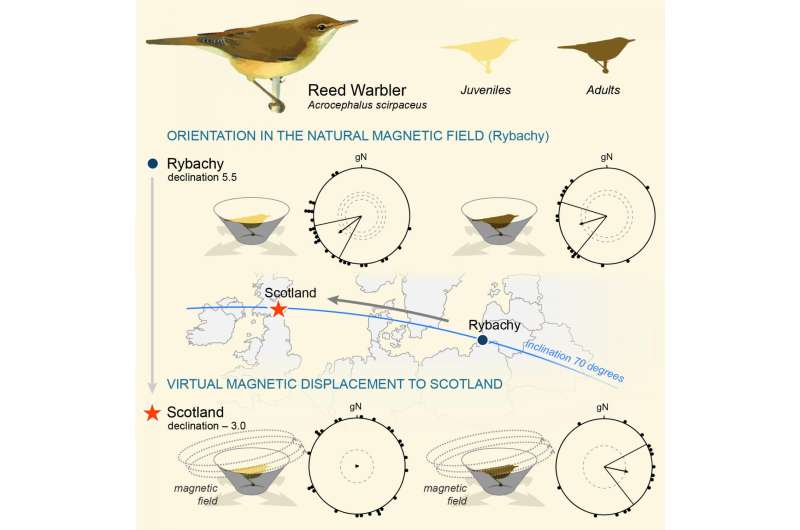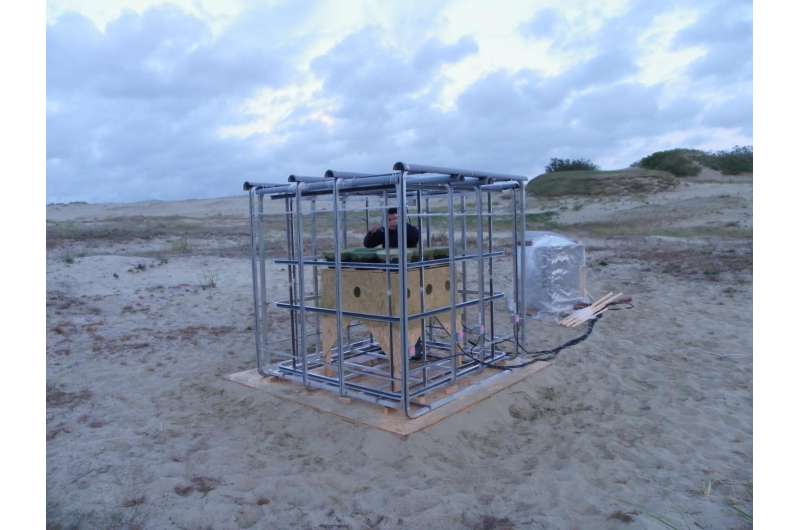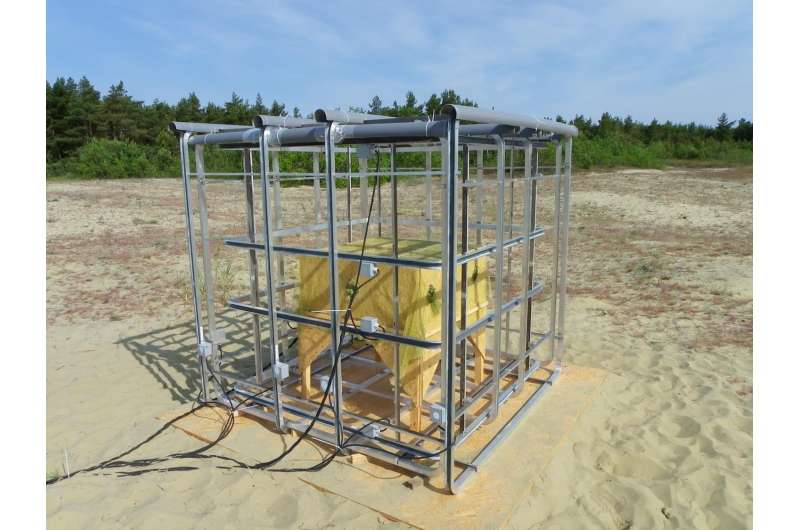Reed warblers have a sense for magnetic declination

Researchers recently showed that migratory reed warblers depend on an internal geomagnetic map to guide them on their long-distance journeys. But it wasn't clear how the birds were solving the relatively difficult "longitude problem," determining where they were along the east-west axis and which way to go. Now, the team's latest report published in Current Biology on August 17 has an answer. The birds rely on changes from east to west in magnetic declination, the angular difference between geographic north and magnetic north.
"We've shown for the first time that magnetic declination may be a component of the magnetic navigational map, at least in some long-distance migratory birds," says Nikita Chernetsov at the Biological Station Rybachy in Russia.
Earlier studies had shown that animals including birds and sea turtles could rely on other aspects of the earth's magnetic field as well as celestial cues to navigate. But those features aren't very informative when it comes to measuring longitude in many parts of the world, including North America and Western Europe. The researchers knew that magnetic declination could help, but it wasn't clear whether reed warblers had a way to measure it.
To find out in the new study, the researchers captured 15 experienced adult Eurasian reed warblers during their autumn migration in Rybachy. They housed the birds in outdoor cages equipped with a special contraption that allowed researchers to precisely adjust the magnetic field.
When the researchers tested the reed warblers under starry skies in the natural magnetic field of Rybachy, the birds oriented as expected in a seasonally appropriate direction. But, when the researchers rotated the magnetic field 8.5° counter-clockwise to adjust the magnetic declination while keeping all else constant, something remarkable happened. Although still in Rybachy, the birds behaved as though they'd been magically transported to Southern Scotland, about 1,450 kilometers away.

After constant exposure to the 8.5° shifted declination, the reed warblers responded with a dramatic 151° change in their mean orientation from WSW to ESE. The findings show that "a small change in magnetic declination is sufficient to elicit a dramatic re-orientation response," the researchers write.
The findings confirm that Eurasian reed warblers use magnetic declination to determine their approximate east-west position within Europe. Importantly, naive birds under the same conditions didn't re-orient themselves correctly. They instead became confused, evidence that the reed warblers learn to follow the magnetic gradients from experience.
"Reed warblers seem to learn the large-scale spatial pattern of the declination gradient during their annual movements, just like they learn other gradients, inclination, and total intensity," Chernetsov says. "As magnetic declination mainly varies along the east-west axis, it provides the possibility to measure longitude."
Many questions remain about how the reed warblers' learning process takes place and how the birds extrapolate beyond gradients they've experienced directly. The researchers say it will also be important to find out if other migratory bird species have the same ability.

Either way, the findings are an important step forward in understanding how birds and other animals navigate over hundreds or even thousands of kilometers. People might consider taking note.
"We humans do not use the magnetic map for our navigation, but we might want to look into this option," Chernetsov says.
More information: Chernetsov et al.: "Migratory Eurasian Reed Warblers Can Use Magnetic Declination to Solve the Longitude Problem" Current Biology (2017). DOI: 10.1016/j.cub.2017.07.024
Journal information: Current Biology
Provided by Cell Press


















